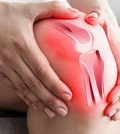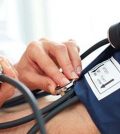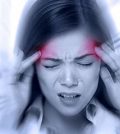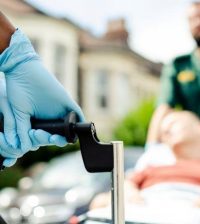- Fragments of Bird Flu Virus Found in 1 in 5 Milk Samples
- Clients Got HIV Through ‘Vampire Facial’ Microneedling Treatments
- Take the Stairs & Step Up to Longer Life
- ‘Drug Take Back Day’ is Saturday: Check for Leftover Opioids in Your Home
- Loneliness Can Shorten Lives of Cancer Survivors
- A Stolen Dog Feels Like Losing a Child, Study Finds
- Healthier Hearts in Middle Age Help Black Women’s Brains Stay Strong
- Better Scans Spot Hidden Inflammation in MS Patients
- Which Patients and Surgeries Are ‘High Risk’ for Seniors?
- Vancomycin May Be Losing Strength Against Common Deadly Infection
Study Questions Use of Migraine Meds in Kids, Teens

A new study raises questions about the effectiveness of medicines commonly prescribed to prevent migraines in children and teens.
The 24-week clinical trial involving 328 patients found no significant differences between the drugs amitriptyline (Elavil), topiramate (Topamax) and a placebo sugar pill in reducing the number of days with a migraine or migraine-related disability.
Fifty-two percent of those taking amitriptyline and 55 percent of those taking topiramate saw the number of days they had a headache drop by 50 percent or more, while 61 percent of those taking a placebo pill saw the same benefit, the findings showed.
The patients taking the prescription drugs also had much higher rates of side effects, such as fatigue, dry mouth, mood changes, and tingling in the hands, arms, legs or feet.
“The study was intended to demonstrate which of the commonly used preventive medications in migraine was the most effective. What we found is that we could prevent these headaches with either a medication or a placebo,” said senior study author Dr. Andrew Hershey. He is co-director of the Headache Center at Cincinnati Children’s Hospital Medical Center.
“This study suggests that a multidisciplinary approach and the expectation of response is the most important, not necessarily the prescription provided,” he added in a hospital news release.
The researchers were “hoping to develop evidence to drive the choice by medical providers of the first-line prevention medication for helping youth with migraine, but the data showed otherwise,” said study first author Scott Powers. He is a pediatric psychologist and co-director of the Headache Center.
“We see this as an important opportunity for health care providers, scientists, children and families, because our findings suggest a paradigm shift,” Powers said.
“First-line prevention treatment will involve a multidisciplinary team approach and focus on non-pharmacological aspects of care. The good news is we can help children with migraines get better,” Powers said.
The findings were published Oct. 27 in the New England Journal of Medicine.
More information
The Migraine Research Foundation has more about migraine in children and teens.
Source: HealthDay
Copyright © 2024 HealthDay. All rights reserved.









